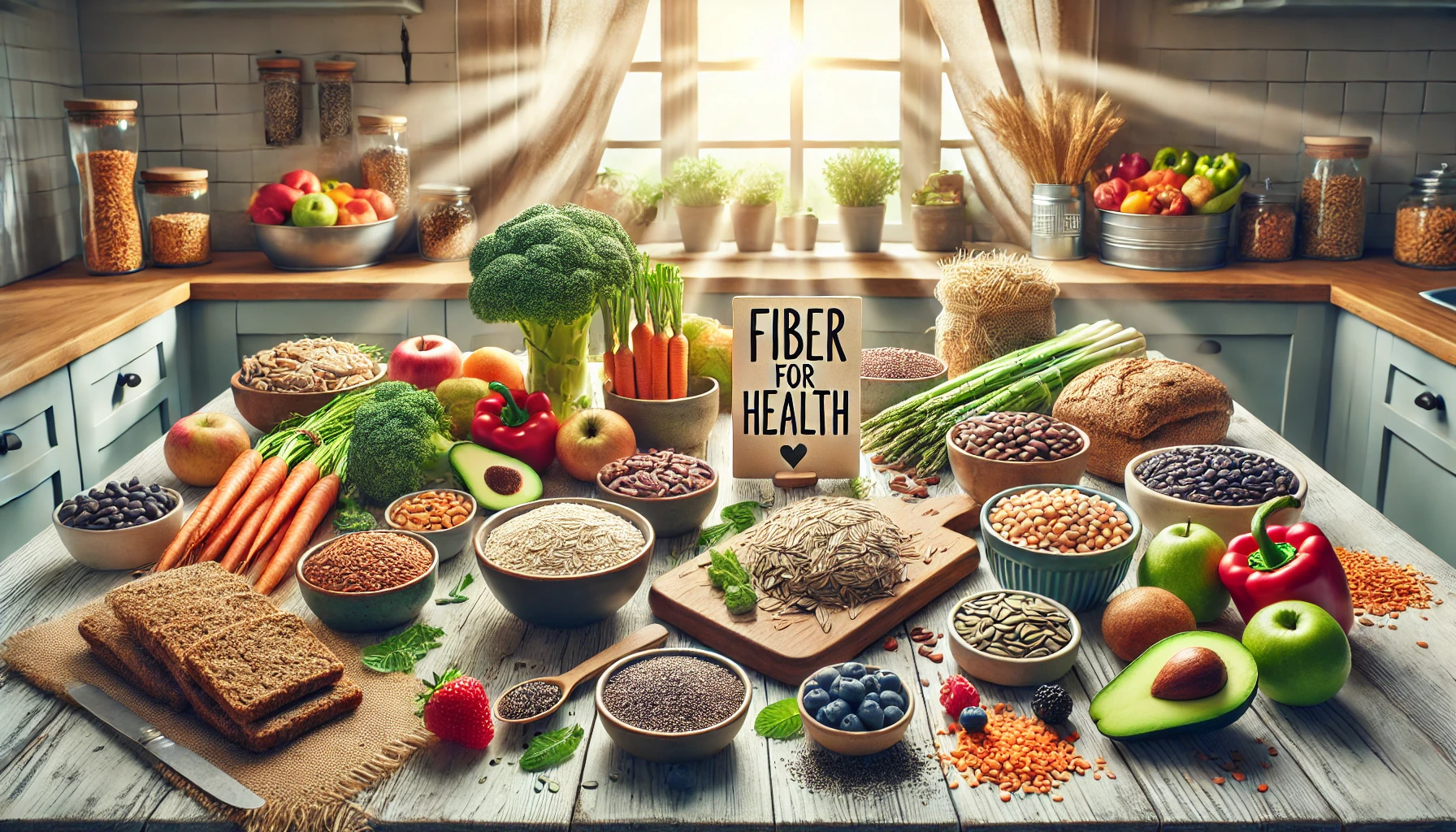You’ve probably heard that fiber is important—but do you really know why? Beyond just helping with digestion, fiber plays a crucial role in your overall health, from regulating blood sugar to supporting gut health and even enhancing your mood.
And the best part? It’s simple to add more fiber to your diet without major changes.
In this article, you’ll learn how fiber works in the body, how it boosts well-being, and practical ways to increase your daily intake naturally and deliciously.
1. What Is Fiber and Why Does It Matter?
Fiber is a type of carbohydrate found in plant foods that the body can’t digest. It passes through the digestive system, helping to clean it, regulate it, and feed your good gut bacteria.
There are two main types:
Soluble Fiber:
- Dissolves in water to form a gel
- Helps regulate blood sugar and cholesterol
- Found in oats, apples, carrots, legumes, chia seeds
Insoluble Fiber:
- Adds bulk to the stool and promotes regular bowel movements
- Found in whole grains, nuts, cauliflower, green beans, potatoes
Both are essential for digestive comfort, gut balance, and long-term health.
2. How Fiber Supports Digestive Health
A diet rich in fiber helps:
- Prevent constipation and irregularity
- Support the movement of food through the digestive system
- Feed beneficial gut bacteria, which influence mood and immunity
- Reduce bloating and gas when consumed consistently
Your gut is your second brain—keeping it healthy starts with what you feed it.
3. Benefits of Fiber Beyond Digestion
Heart Health
Soluble fiber helps lower LDL (“bad”) cholesterol and supports healthy blood pressure.
Stable Energy Levels
Fiber slows the absorption of sugar, preventing blood sugar spikes and crashes.
Better Mood and Mental Clarity
A healthy gut = better neurotransmitter balance, including serotonin (the “feel good” hormone).
Weight Management
Fiber-rich foods promote fullness, reducing the urge to overeat.
Disease Prevention
A high-fiber diet has been linked to lower risk of type 2 diabetes, stroke, and some cancers (especially colorectal cancer).
4. How Much Fiber Do You Need?
According to health guidelines:
- Women: 25 grams per day
- Men: 38 grams per day
Most people get less than half of that. But with a few swaps and additions, you can easily increase your intake.
5. Best High-Fiber Foods to Add to Your Diet
Here are some easy, delicious sources of fiber:
🌾 Whole Grains
Oats, brown rice, quinoa, whole wheat pasta, barley
🫘 Legumes
Lentils, chickpeas, black beans, peas, edamame
🥦 Vegetables
Broccoli, carrots, Brussels sprouts, spinach, sweet potatoes
🍓 Fruits
Apples, pears, raspberries, bananas, oranges
🌰 Nuts & Seeds
Almonds, chia seeds, flaxseeds, sunflower seeds
🥖 Extras
Popcorn (air-popped), avocado, artichokes
6. Simple Ways to Increase Fiber Daily
- Start your day with oatmeal + fruit + chia seeds
- Add beans to salads, soups, and pasta dishes
- Swap white rice for quinoa or brown rice
- Snack on fruit + a handful of nuts
- Use whole grain bread and tortillas
- Add veggies to every meal, even breakfast
- Sprinkle flax or chia on smoothies, yogurt, or cereal
Tip: Increase fiber gradually and drink more water to help your body adjust smoothly.
7. Watch Out for Low-Fiber Traps
Low-fiber diets are common in:
- Ultra-processed foods
- Fast food meals
- White bread, pasta, and rice
- Sugary snacks and drinks
These lead to slow digestion, inflammation, and blood sugar crashes. Focus on whole foods for natural fiber and nourishment.
Fiber = A Foundation of Well-Being
Adding more fiber to your diet is one of the easiest, most impactful steps you can take for better digestion, more energy, and long-term health. It’s not about being perfect—it’s about being more intentional with your plate.
Start today. Add a little more fiber to each meal.
Your body—and your gut—will thank you.
